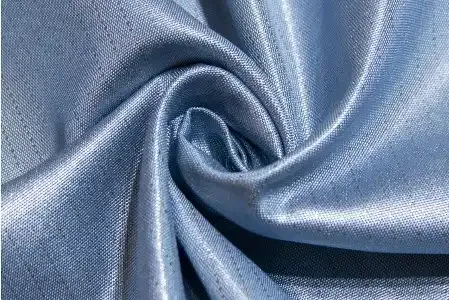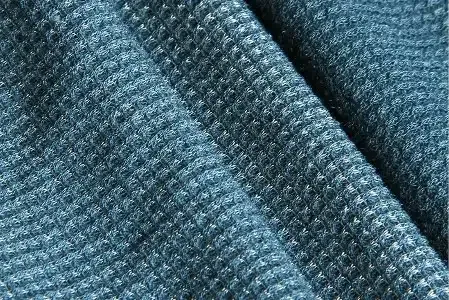Silver in Textile
The use of silver in textiles has been gaining popularity over the years due to its numerous benefits. Silver is a natural element that has antimicrobial, antifungal, and antibacterial properties. This property makes it ideal for use in textiles as it helps prevent the growth of bacteria, fungi, and other microbes that may cause odors or infections.
The incorporation of silver into textile products such as clothing, towels, bed sheets, and blankets has been shown to have several advantages. One significant benefit is its ability to reduce odor-causing bacteria on the fabric. This reduction not only makes textiles smell better but also decreases the frequency at which they need washing.
Furthermore, silver-infused textiles are hypoallergenic as they minimize the buildup of allergens like dust mites that can trigger allergies or asthma attacks. Additionally, these textiles can inhibit bacterial growth on skin surface areas such as underarms when worn as clothing.
Apart from being comfortable and functional materials with excellent hygiene qualities for personal wearables like socks or underwear made from silver-infused yarns; there are exciting new developments where medical professionals are seeing potential applications within their industry too.
Types of Silver in Textiles
Silver has been used for centuries for its antimicrobial properties, and incorporating it into textiles is a way to harness these benefits in various applications. In the realm of textiles, there exist different types of silver treatments or coatings used to imbue fabrics with antimicrobial properties.
i. Silver Nanoparticles
One popular approach to infusing textiles with silver is through the use of silver nanoparticles. These nanoparticles range in size from 1 to 100 nanometers and can be embedded into fabric during the manufacturing process or applied as a post-treatment coating. The small size of these particles allows them to penetrate the textile matrix easily, increasing their effectiveness at inhibiting microbial growth.
The antimicrobial action of silver nanoparticles occurs due to their ability to release positively charged ions when they come into contact with moisture or body fluids. These ions disrupt bacterial membranes, inhibit enzyme activity, and interfere with DNA replication processes essential for microbial survival.
Another advantage offered by using silver nanoparticles is their durability on textiles. They exhibit good wash resistance and can withstand multiple laundering cycles without significant loss in efficacy.
ii. Silver Ions
Another method employed by textile manufacturers is impregnating fabrics with solutions containing dissolved silver ions (Ag+). This technique involves immersing the fabric in a solution where the Ag+ ions bind electrostatically onto its surface fibers.
Silver ions work similarly to nanoparticles by exerting antimicrobial effects upon contact with microbes' cell walls or membranes. They disrupt vital cellular functions like respiration and metabolism while preventing microbial reproduction.
However, one limitation associated with using free Ag+ solutions is their tendency to leach out gradually over time during repeated washing cycles or exposure to external factors like pH variations or moisture content changes within the fabric environment itself.
iii. Silver-Infused Fibers
Silver-infused fibers represent another approach to incorporating silver into textiles. These fibers can be either natural or synthetic and consist of tiny particles or compounds of silver uniformly dispersed throughout the fiber matrix.
The advantage of using silver-infused fibers is their inherent antimicrobial properties, as every strand contains a continuous distribution of silver. This provides long-lasting protection against various microbes without relying on external coatings or treatments.
Additionally, fabrics made from these silver-infused fibers tend to exhibit enhanced durability since the antimicrobial effect is not reliant on surface layers alone but permeates throughout the entire fabric structure.
Uses of silver in textiles
i. Silver nanoparticles have been used to develop wound dressings with superior healing abilities than conventional ones.
ii. Hospital linens treated with nano-silver particles show promising results in reducing infection rates among patients.
iii. Sportswear lined with fabrics containing silver ions has proven useful in reducing body temperature during exercise while providing antimicrobial protection.
Silver in Textile disadvantages
Despite all these benefits though - some concerns exist regarding sustainability issues associated with incorporating any metallic elements into our textiles long-term thinking mainly focused on environmental impact assessments post-use stages for disposal methods if non-biodegradable components could pose risks (e.g., leaching) into waterways affecting aquatic life cycles making proper recycling critical needs moving forward today more than ever before.
Silver in Textile advantages
Therefore, Silver-infused textiles offer many advantages beyond their aesthetic appeal, including odor control and hypoallergenic properties. The use of silver in textiles has sparked promising developments within the medical sector as researchers explore its potential to improve wound healing and infection prevention. However, product manufacturers must consider sustainability concerns associated with incorporating metallic elements into textile production moving forward to ensure they align with global environmental considerations towards responsible consumption and sustainable production methods in the future.
Conclusion
Textiles treated with different types of silver offer numerous benefits in terms of fighting microbial growth and maintaining hygiene standards. Whether through nanoparticles, ions, or infused fibers, each method harnesses the antimicrobial properties associated with silver to varying degrees. By integrating these technologies into textiles, manufacturers can provide consumers with innovative products designed for improved cleanliness and reduced bacterial contamination in areas such as healthcare facilities, sportswear, bedding materials, and more. As research continues to advance in the field of textile technology, we can expect even more effective methods for incorporating silver into fabrics while ensuring their comfort and practicality for everyday use.











0 Comments